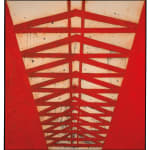
Tony Bevan British, 1951
Red Interior (PC0111), 2001
Acrylic and charcoal on canvas
203.2 x 190.5 cm. (80 x 75 in.)
Copyright The Artist
